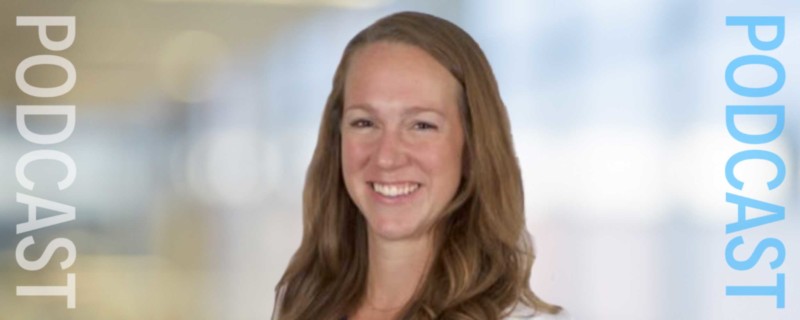
Using cell culture models of endocrine resistance to improve triple positive breast cancer treatment options.
Podcast: Download (Duration: 19:21 — 26.6MB)
Subscribe Here: Apple Podcasts | Spotify | RSS | More
Subscribe to the Cell Culture Dish Podcast on: iTunes | Google Play
Gibco Cell Culture Hero, Dr. Hillary Stires discusses her work researching better treatment options for triple positive breast cancer patients. She explains how the use of cell culture modeling helps drive her research. She also talks about her experience as a cell culture hero and her passion for the scicomm movement on social media platforms.
I began the interview by asking Dr. Stires how she became interested in breast cancer research. She explained that she became interested in college where she realized that there was a great need for breast cancer research. She decided to change her major from behavioral neuroscience to breast cancer research through endocrinology. She goes on to explain that many breast cancers are driven by hormone signaling and endocrinology is the study of hormone signaling. At Georgetown, where Hillary is doing her postdoctoral research she has also been able to meet with patient advocates and she has a personal connection to breast cancer research because her best friend was diagnosed with breast cancer at 28, shortly after she began her research at Georgetown.
Next I asked Hillary to share her current work at Georgetown. She explained that most commonly breast cancer is divided into three types based on histology. There is estrogen receptor positive breast cancer, HER 2 receptor positive breast cancer and triple negative where the tumor expresses neither. There are successful treatments for both the estrogen receptor and HER 2 receptor forms of breast cancer, which Hillary describes in detail. Where her research lies is in the middle area where the tumor expresses both estrogen receptors and HER 2 receptors and with this type of diagnosis the treatments are not as effective.
Next I asked what makes triple positive breast cancer so difficult to treat and what is her goal in researching this type of cancer. She explains that ASCO (American Society of Clinical Oncology) currently recommends treating with HER 2 receptor positive therapies if HER 2 receptor is present. However, there is also some language around adding estrogen receptor positive therapies as well in patients with a triple positive diagnosis. When you look at the clinical trials though, there is something about the presence of the estrogen receptor in these patients that make their prognosis worse and also makes the HER 2 treatments not as effective. In addition, if you are treating patients with drugs for both estrogen receptor and HER 2 positive cancers then there can be more side effects. So researchers are looking for the most effective way to treat these patients when the estrogen receptor is present and this requires an understanding of what the estrogen receptor is doing inside the tumor.
I then asked if Hillary could explain how she uses cell culture modeling to inform her research. She described that they use cell culture models that express both the estrogen receptor and HER 2 receptor to see how different drug combinations will work on the cells. In addition, they have a couple main ways that they model resistance. Hillary provided a very interesting explanation of how the resistance modeling works and provided examples.
I asked Hillary about her selection as a Gibco Cell Culture Hero and what her experience has been like so far. She said that she is passionate about science communication and being a Gibco Cell Culture Hero allowed her to do a webinar highlighting her research. She went on to say that it has been a great way to share information about her research, that it has been a great experience and it continues to open doors for her.
I followed up by asking her about the #scicomm movement happening with scientists on social media platforms. She thinks it is so popular because it allows scientists to control their own narrative about the work they are doing and it also provides a platform to share this work. Journal articles can take up to a year to get published and sharing this information through social platforms is a good way to provide the information sooner. This sharing of information enables earlier collaborations and also keeps patient advocates informed of any new research. Hillary’s advice to others considering sharing on social platforms is to just jump in and not to be scared of it.
Last, I asked her about next steps with this area of research. She shared that she is moving to a position that is more involved in policy, but plans to publish her work before she leaves. She is happy that the work in the lab will continue with the goal of finding better, more effective treatments for patients with triple positive breast cancer.